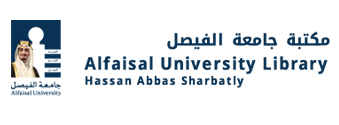Superabundance : the story of population growth, innovation, and human flourishing on an infinitely bountiful planet / Marian L. Tupy and Gale L. Pooley
By: Tupy, Marian L [author].
Contributor(s): Pooley, Gale Lyle [author] | Gilder, George F [writer of foreword].
Publisher: Washington, DC : Cato Institute, ©2022Description: xvii, 547 pages : illustrations (chiefly color) ; 24 cm.Content type: text Media type: unmediated Carrier type: volumeISBN: 9781952223396.Subject(s): Population -- Economic aspects | Economic development | Natural resourcesGenre/Form: Print books.| Current location | Call number | Status | Date due | Barcode | Item holds |
|---|---|---|---|---|---|
| On Shelf | HB849.41 .T75 2022 (Browse shelf) | Available | AU00000000018584 |
Includes bibliographical references and index
Machine generated contents note: g pt. ONE t Thanos's deadly idea: from antiquity to the present and beyond -- g ch. 1 t Axe we in the midst of progress, or are we facing the apocalypse? -- g ch. 2 t Thanos's intellectual and practical progenitors -- g ch. 3 t Julian Simon and the bet that made him famous -- g pt. TWO t Measuring abundance: new methodology, empirical evidence, and in-depth analysis -- g ch. 4 t Introduction to the Simon Abundance Framework -- g ch. 5 t Personal resource abundance: empirical evidence and analysis -- g ch. 6 t Population resource abundance: methodology, evidence, and analysis -- g pt. THREE t Human flourishing and its enemies -- g ch. 7 t Humanity's 7-million-year journey from the African rainforest to the Industrial Revolution -- g ch. 8 t The Age of Innovation and the Great Enrichment -- g ch. 9 t Where do innovations come from? The crucial roles played by population growth and freedom -- g ch. 10 t The enemies of progress from the Romantics to the extreme environmentalists.
"Generations of people have been taught that population growth makes resources scarcer. In 2021, for example, one widely publicized report argued that "The world's rapidly growing population is consuming the planet's natural resources at an alarming rate . . . the world currently needs 1.6 Earths to satisfy the demand for natural resources ... a figure that could rise to 2 planets by 2030." But is that true? After analyzing the prices of hundreds of commodities, goods, and services spanning two centuries, Marian Tupy and Gale Pooley found that resources became more abundant as the population grew. That was especially true when they looked at "time prices," which represent the length of time that people must work to buy something. To their surprise, the authors also found that resource abundance increased faster than the population, a relationship that they call superabundance. On average, every additional human being created more value than he or she consumed. This relationship between population growth and abundance is deeply counterintuitive, yet it is true. Why? More people produce more ideas, which lead to more inventions. People then test those inventions in the marketplace to separate the useful from the useless. At the end of that process of discovery, people are left with innovations that overcome shortages, spur economic growth, and raise standards of living. But large populations are not enough to sustain superabundance; just think of the poverty in China and India before their respective economic reforms. To innovate, people must be allowed to think, speak, publish, associate, and disagree. They must be allowed to save, invest, trade, and profit. In a word, they must be free"--


